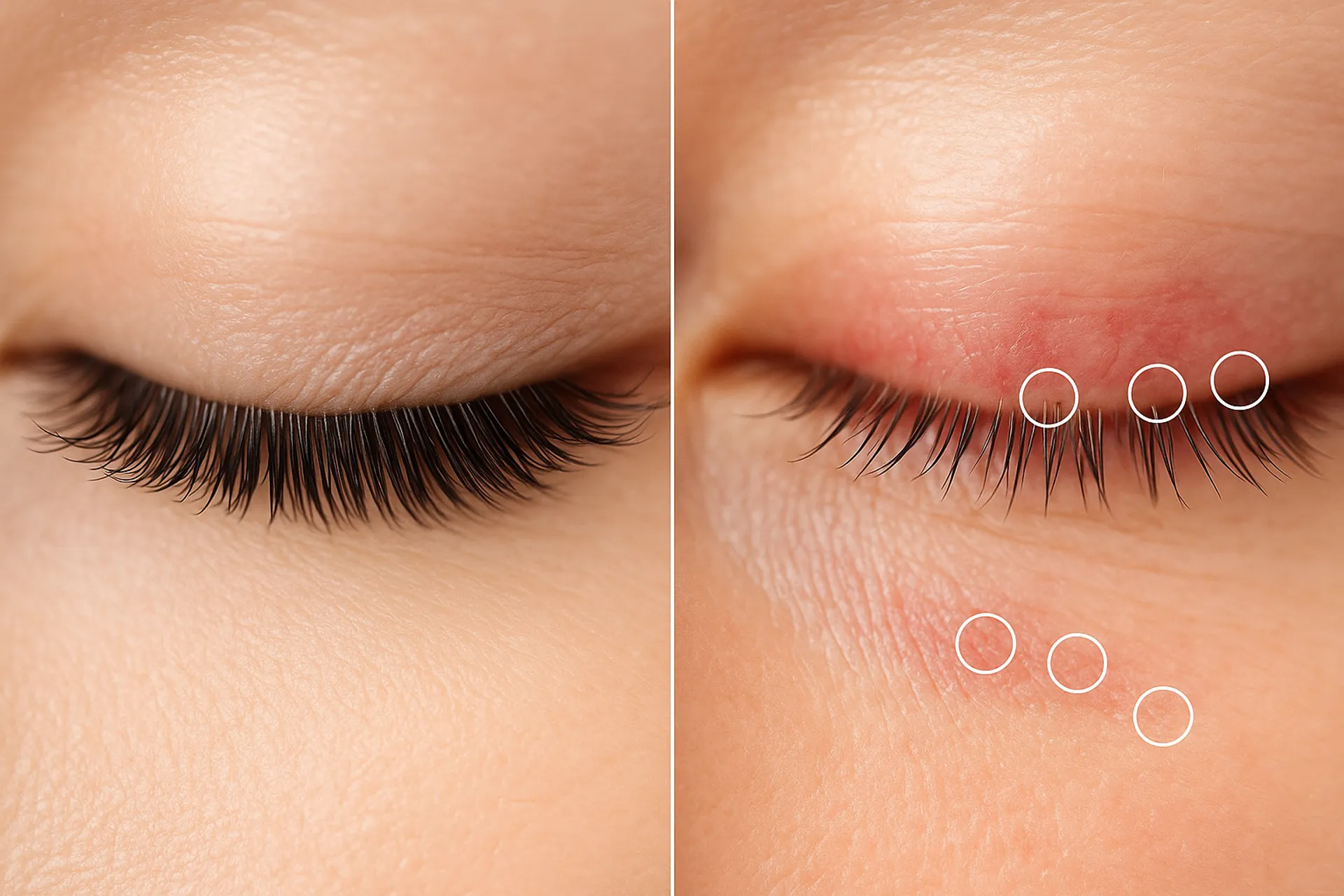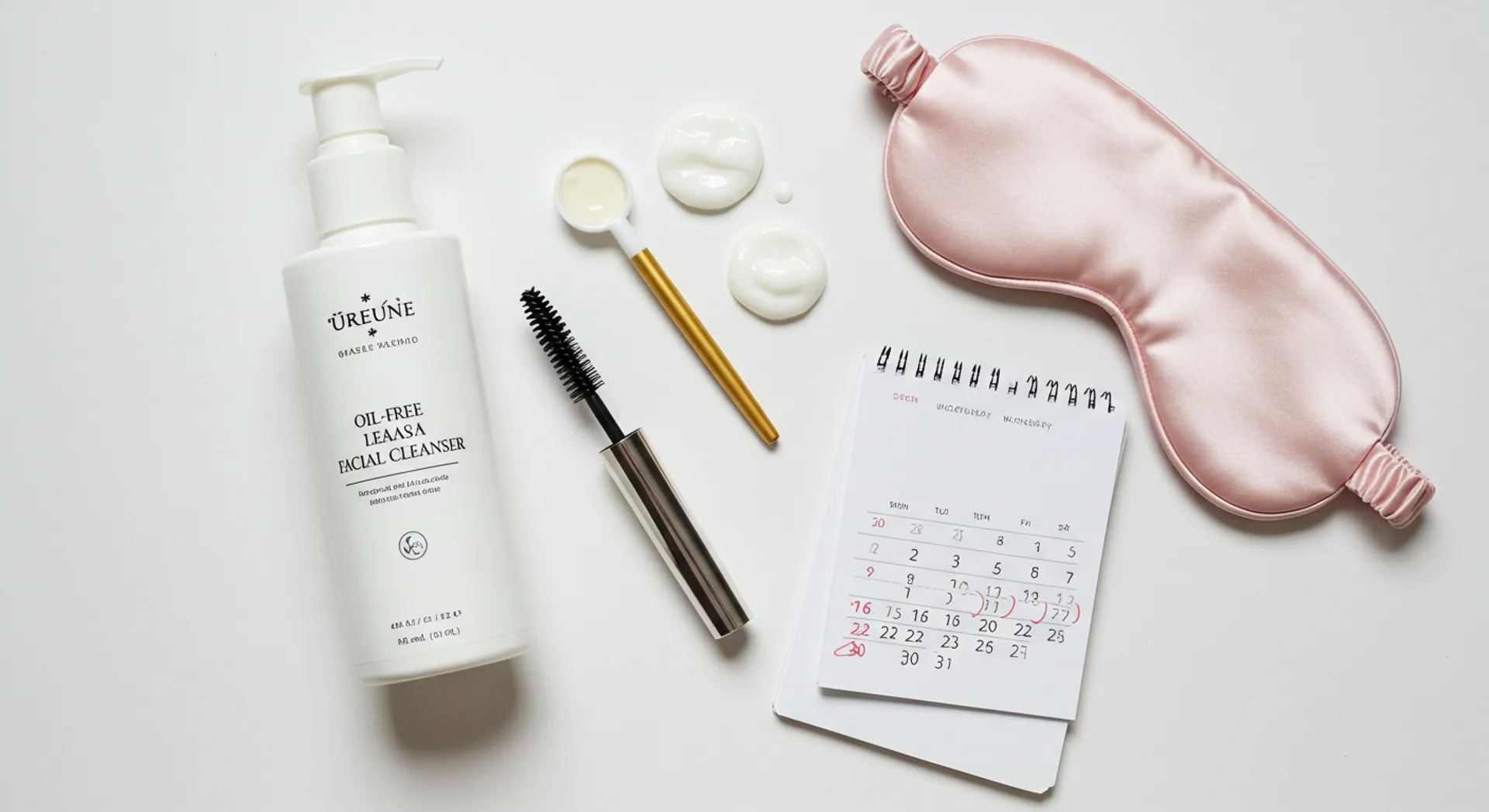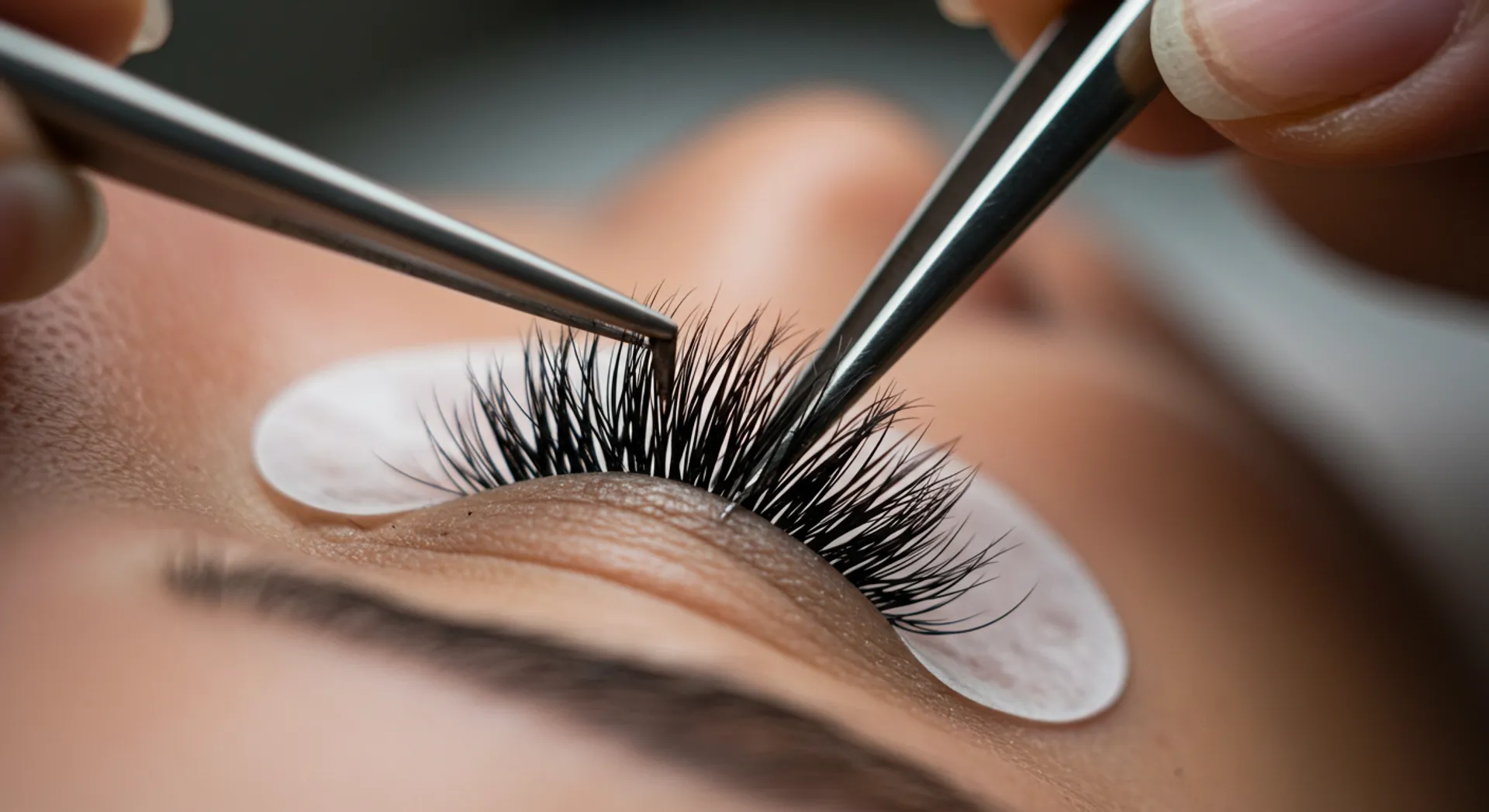If your lashes feel sparse, brittle, or uneven after extensions, you’re not alone. The good news: with the right steps, most lash lines bounce back. This guide explains how to spot damage, stop further breakage, and rebuild a fuller, healthier lash line — plus how to prevent problems the next time you book a set.
What Lash “Damage” Looks Like
Damage usually shows up as one or more of the following:
- Thinning and gaps where lashes look less dense than usual.
- Short, stubby regrowth from snapped or pulled lashes.
- Itching, redness, crusting along the lash line (often a hygiene or irritation issue).
- Tenderness or swelling after appointments (possible adhesive sensitivity).
If loss seems widespread or you’re losing brows too, check medical causes like madarosis (eyelash/eyebrow loss) and see an eye-care professional for evaluation.
Common Reasons Lashes Get Compromised
- Heavy sets or poor isolation: Excess weight and stickies can stress follicles and snap fragile lashes.
- Picking or premature removal: Pulling extensions takes natural lashes with them.
- Lid hygiene issues (blepharitis): Inflamed, debris-laden lids can irritate follicles and worsen shedding. See the Cleveland Clinic blepharitis overview for symptoms and care.
- Eye surface dryness: Dry eye can make lids and lashes feel gritty and fragile; the National Eye Institute explains causes and treatments.
- Adhesive reactions or poor technique: The American Academy of Ophthalmology notes that improper application and certain glues can irritate eyes and lids.
First Aid: Stop the Damage Now
- Avoid picking or DIY removal. Pulling extensions removes natural lashes. Book professional removal if you need a reset.
- Switch to gentle cleansing. Use an oil-free lash cleanser and a soft brush to remove debris and makeup daily. Our Beginner’s Aftercare Guide shows the exact steps.
- Cool compress for irritation. If lids are red or itchy, skip extensions for now, cleanse gently, and talk to your provider — especially if symptoms resemble blepharitis or allergic reaction.
- Pause mascara and curlers. Let fragile lashes recover without extra stress.
Your 6-Week Reset Plan
This timeframe aligns with a meaningful chunk of the lash cycle, allowing damaged lashes to shed and healthier ones to emerge.
Weeks 0 – 2: Cleanse & Calm
- Clean lids daily with a lash-safe cleanser and spoolie (no harsh rubbing).
- Sleep on your back or use a silk pillowcase to reduce friction.
- If eyes feel dry or gritty, review dry-eye guidance and discuss lubricating drops with your provider.
Weeks 2 – 4: Condition & Strengthen
- Introduce a gentle, prostaglandin-free lash serum (peptides, panthenol) to condition the lash fiber.
- Keep lids clean to limit debris that can worsen blepharitis.
- Support retention with habits from Natural Lash Care: Oils, Serums & Gentle Maintenance.
Weeks 4 – 6: Rebuild Wisely
- If you return to extensions, ask for lighter diameters and shorter lengths, perfect isolation, and avoid mega-volume.
- Plan fills thoughtfully — see How Often Should You Really Get Your Lash Extensions Redone? to keep sets fresh without overworking lashes.

When to See a Professional
Seek help if you notice persistent gaps, lash loss beyond the lash line, chronic redness, pain, or changes in vision. The American Academy of Ophthalmology lists medical causes of lash loss, from skin conditions to autoimmune issues, that may need treatment. If you’ve had swelling or hives after appointments, review our Allergic Reactions to Lash Extensions: Prevention & Solutions and talk to your artist about patch testing and adhesive changes.
Safe Options for Regrowth Support
- Conditioning serums (no “-prost” actives): Peptides and panthenol help lashes feel stronger and more flexible.
- Prescription bimatoprost (doctor-supervised): If appropriate for you, your provider may discuss a prescription solution. Read the Cleveland Clinic overview of bimatoprost for risks and benefits, and follow your prescriber’s directions closely.
- Address underlying lid/eye issues: Treating dryness, oil-gland dysfunction, or inflammation supports healthier lashes. See meibomian gland dysfunction to understand a common root cause of irritation.
Preventing Future Damage
- Choose technique over drama: Ask for fine diameters (e.g., 0.03–0.07 mm), proper isolation, and mapping that follows your natural growth pattern.
- Maintain lid hygiene: Cleanse daily; unmanaged debris can worsen blepharitis and shedding.
- Protect the eye area: For safety around adhesives and application, review the AAO eyelash extension safety page.
- Educate & schedule smartly: Share our Beginner’s Aftercare Guide with a friend or save it for your next set.

Bottom Line
Most lash damage is fixable with patience and consistent care. Pause aggressive styling, cleanse lids daily, condition the lash fiber, and return to extensions with lighter sets and better technique. If loss is widespread or accompanied by eye symptoms, get evaluated — treating underlying issues like blepharitis, dry eye, or meibomian gland dysfunction supports real recovery. With a focused six-week reset and smarter maintenance, your lash line can look naturally full, soft, and healthy again.
